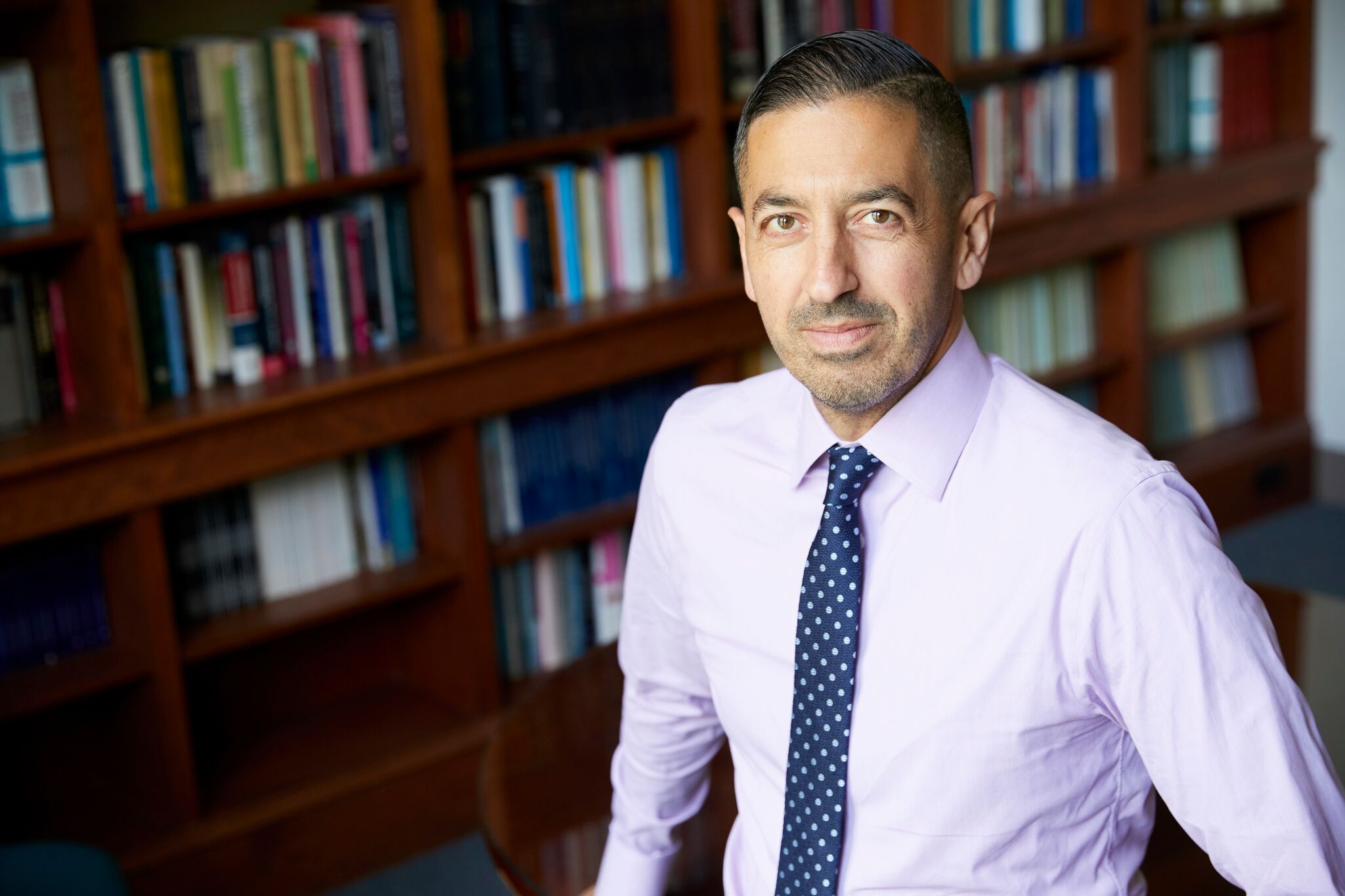Tuesday, Robert Kennedy, Jr. said that President-elect Donald Trump asked him to chair a committee meant to investigate the scientific integrity of vaccines. Kennedy has expressed skepticism in the past about the efficacy of vaccines, lending his support to the widely debunked idea that vaccines cause autism. The Trump team has since said that the committee would actually be on autism and that no decisions about it have yet been made. Either way, Kennedy’s potential appointment in the Trump administration is a troubling development, signaling the President-elect’s apparent willingness to lend a sympathetic ear to unscientific and dangerous claims about the supposed “hazards” of vaccines.
In fact, the science surrounding vaccines is settled. They are safe and effective. Indeed, the development and widespread use of vaccines are among the sentinel triumphs of public health. The universal recommendation of childhood vaccination has been listed by the Centers for Disease Control and Prevention (CDC) as one of the 10 great public health achievements of the last century. The CDC has credited vaccination with dramatic declines in infectious disease morbidity in the United States, including a sharp reduction in measles and the elimination of wild-type polio from the Western Hemisphere. Globally, the effect of vaccines has been no less dramatic; vaccination has been estimated to save between two and three million lives each year. The worldwide eradication of smallpox, officially recognized by the World Health Assembly in 1980, stands as a testament to the success of coordinated international vaccination efforts, and their potential to rid the planet of deadly diseases.
There is a long history to both the development of vaccines and the resistance to their use. In the 1770s, an English country doctor named Edward Jenner heard a milkmaid say “I shall never have smallpox for I have had cowpox. I shall never have an ugly pockmarked face.” This remark appears to have made an impression on him, as did the general belief among dairy workers at the time that cowpox infection protected against the much more dangerous disease of smallpox. In 1796, Jenner intentionally infected an eight-year-old boy named James Phipps with cowpox. He did this by scraping pus from the lesion of a cowpox-infected milkmaid into scratches he made in the arms of Phipps. Six weeks later, he performed the same procedure with smallpox, and found that the boy was unaffected by the disease. This process of deliberate infection, called variolation or inoculation, had been in use as a form of smallpox prevention for centuries. During this time, the procedure had been performed with actual smallpox, rather than with the weaker cowpox. For this reason, variolation was risky. Two to three percent of those variolated either died from smallpox, caused a local epidemic, or became infected with an illness as a consequence of the variolation procedure. Jenner’s innovation, using cowpox instead of smallpox, proved much safer. He called his discovery “vaccination,” after vaccinia, the Latin word for a species of virus related to cowpox. Governments were quick to embrace Jenner and his findings, and, by 1800, 100,000 people had been vaccinated in Europe. Enthusiasm for the procedure also spread to the young US, where President Thomas Jefferson, a follower of Jenner’s work, repeatedly endorsed vaccination. Despite this broad acceptance, it is important to note that, from the outset, there were voices denouncing vaccines. This was particularly true in the mid-19th century, when opposition to compulsory immunization laws in England, as well as skepticism over vaccine safety and efficacy, created the conditions for a burgeoning anti-vaccine movement. Colorfully enough, George Bernard Shaw called vaccination “a filthy piece of witchcraft.”
In the 20th century, the power of vaccines in the US was perhaps best illustrated by the fight against polio. Polio attacks the central nervous system and can cause paralysis. It is an ancient disease that has been present throughout recorded history. Primarily affecting children, polio was also known as “infant paralysis.” In the early 20th century, polio epidemics would regularly strike the US. A 1916 epidemic resulted in 27,000 cases and 6,000 deaths nationwide; a 1952 epidemic resulted in 58,000 cases and 3,000 deaths. In 1948, the American medical researcher Jonas Salk was awarded a grant to investigate the virus with the hope of developing a vaccine. By 1950, he had developed an early version of the polio vaccine through a procedure first attempted, unsuccessfully, by Maurice Brodie over a decade earlier. Salk’s work led to the inactivated polio vaccine (IPV), an intramuscular injection of inactivated polio strains. Salk first tested IPV on himself and his family, as well as on a number of former polio patients. On March 26, 1953, Salk announced his success on a national radio show. After clinical trials showed the efficacy of the vaccine, a national immunization campaign was launched in 1955. Despite some challenges with vaccine manufacture and side effects in some cases, by 1957, polio rates had dropped below 6,000 new cases. An oral vaccine developed by Dr. Albert Sabin, shown to be safer and more effective than the Salk vaccine, became available in 1962, accelerating the progress against polio. Thanks to these vaccines, and the tireless efforts to mobilize their effects through mass vaccination campaigns, polio is now on the brink of worldwide eradication.
Despite the efficacy of the polio vaccine, and the fact that polio is close to eradication, the persistence of polio, more than five decades after the introduction of a successful vaccine, is indicative of the challenges that vaccines face moving to widespread effectiveness. Vaccines are only effective if widely disseminated. The success of immunization requires coordinated efforts to distribute vaccines among populations, and to encourage their use. When these efforts are neglected, or actively obstructed, the diseases of the past return. In addition to the reappearance of measles, for example, anti-vaccine attitudes are likely to blame for recent cases of mumps. Internationally, progress against similarly archaic diseases has been hindered by a combination of anti-vaccine suspicions and violent conflict. In Nigeria, gains against polio have been threatened by the activities of the Boko Haram terror group. While the WHO declared Nigeria “polio-free” only last year — provisionally marking the end of polio on the African continent — the recent liberation of territory formerly held by Boko Haram has revealed several new cases of the virus. The terror group’s opposition to Western medicine has made it close to impossible to vaccinate children in Boko Haram-controlled regions, though vaccination efforts are underway in surrounding areas. The situation is similar in Pakistan and Afghanistan, where religious militants have also violently opposed vaccination efforts. Pakistan and Afghanistan are the last remaining countries where polio is endemic. The state of polio in these places speaks to how the continued existence of such diseases has become, ironically, a human-made phenomenon, with the activities of a stubborn minority preventing the natural decline of these deadly conditions.
The success of efforts against smallpox and polio reflect the scale on which this improvement can occur when public and private actors are committed to ending a disease, and are willing to work collectively to achieve this goal. One is hopeful that these same forces in combination can be marshalled to meet emerging threats like Zika, mindful of the responsibility of public health to play a role in helping to catalyze this confluence of forces, towards the goal of worldwide disease prevention. To do any less would be to put the health of populations at risk, which is exactly what Trump and Kennedy will be doing if they cast doubt on the safety and effectiveness of vaccines.
Originally published at medium.com


